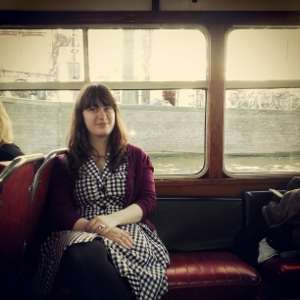Chamber music recitals are usually more intimate and personal than big orchestral performances. Generally, this is a very pleasant thing as it there is less distance – literally and figuratively – between the musicians and the audience. Now when the chamber musicians include Pekka Kuusisto, it isn’t just a pleasant thing, it’s a fantastic thing. With his upbeat and rather hilarious banter between the different pieces, Kuusisto creates an atmosphere that is not only wonderful, but also conducive to the understanding and enjoyment of the music played.
It was entirely Paganini for violin and guitar, but Kuusisto and Ismo Eskelinen compiled a program that was diverse and exciting. Starting off with three sonatas from the collection Centone di Sonate, Kuusisto introduced the pieces by saying that we ought to imagine opera characters in them, from the “brainless soprano” to the “baritone who gets all the girls”. He encouraged the audience to imagine scenarios instead of looking at the two of them playing (which he didn’t think could be very interesting). I actually find it quite wonderful when musicians offer advice on how to listen to pieces, especially pieces that may not be familiar to everyone in the audience.
The three sonatas, in A minor, D major and A major, were all beautiful little pieces. The first was the most lighthearted of the three (despite being in the minor); especially the second waltz-like movement was fun. The second sonata, in D, was somewhat more calm and contained some exquisite violin passages, though its ending was as raucuous as the first sonata had been. Before playing tha third sonata Kuusisto told us why a program of only Paganini works so well; when you only hear one of his pieces you will have the melody stuck in your head for weeks, which starts to get annoying after a day or two. But when you are bombarded with “a truckload of Paganini melodies”, none of them stick! All joking aside, there is some truth in what Kuusisto said. The melodies of all works played this evening were incredible and they are surely Paganini’s greatest strength. But despite the multitude of pieces, it never felt like we were bombarded with melodies; it felt much more balanced.
The fourth piece, for example, was the Sonata concertata, one in which the guitar plays a role equal to the violin, and is no longer in the background. It was quite something to see two musicians as technically talented and musically gifted as Kuusisto and Eskelinen play this piece together. What makes it work so well is that they are both such fantastic musicians that in their playing there’s more room for freedom and interpretation. At times I felt like I was watching the best street musicians in the world, as opposed to well-trained classical musicians with perfect posture and allure. This is a good thing: some performances can make music almost sound like it’s shackled, and when the opposite happens – when the music is allowed to roam free – that is when it reaches its full potential.
The second half of the program started of with the Grand Sonata in A major. For me this was the least successful piece of the evening. Although I cannot fault Eskelinen, whose guitar playing was mesmerizing, there was something about the piece that sounded more chaotic. Perhaps it is simply the fact that the tables were turned: instead of the violin playing the main melodies, it was now reduced to a background instrument and the guitar took centre stage instead. At times the violin, despite being played softly, still seemed somewhat too loud, which I think can be attributed as much to the structure and timbre of the instruments as to Kuusisto.
Following the Grand Sonata was the Sonata in E minor, my favourite of the evening. It started off sounding like a lament, a song for someone whose heart was broken. The violin was crying, though much too subdued to be dramatic, Kuusisto playing the beautiful melodies perfectly. In the second movement the lament is transformed into a frenzied dance, almost like whoever’s heart was broken had taken some drugs and was now doing a happy dance. The joy that Kuusisto and Eskelinen had in playing this program shone through their performance, and with smiles on their faces and tapping feet, they ended the Sonata impressively. This was not the end of the evening, though, as a Tarantella was still on the program, and there was a Cantabile as an encore, both performed very well. After this evening I have become a fan of Paganini, and i have remained a fan of Kuusisto, who managed to blur the boundaries between classical music, folk and just good old fun.


